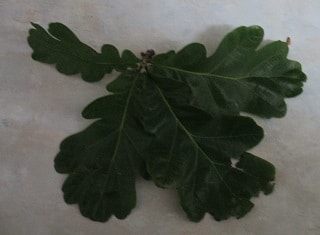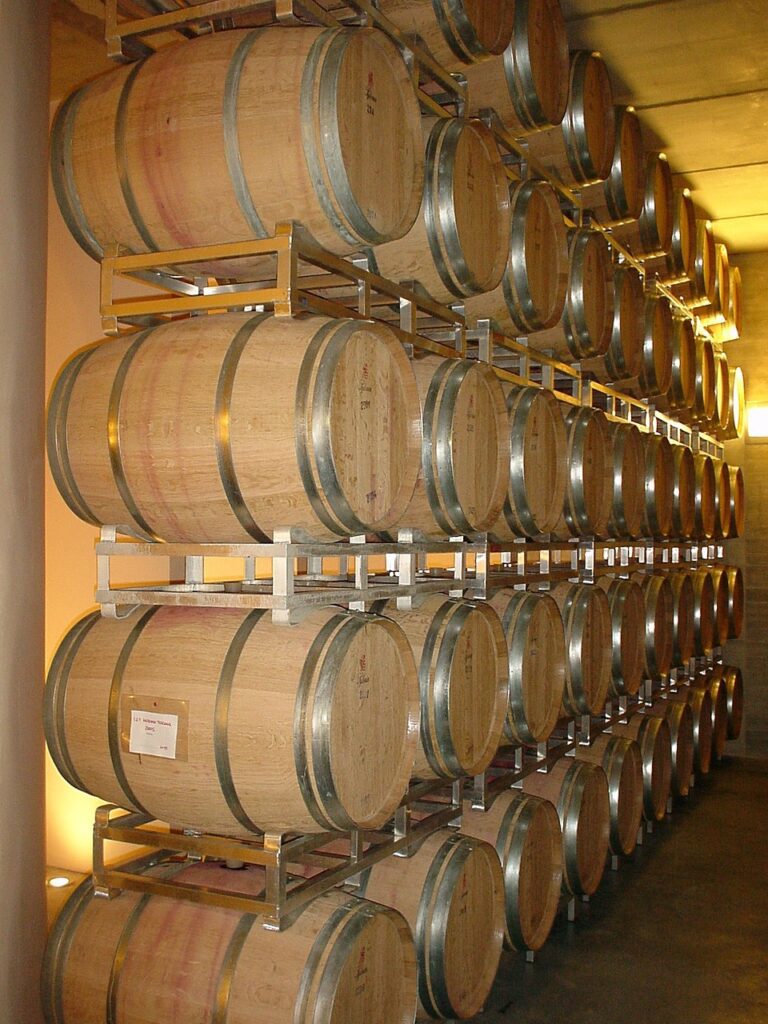Although wine barrels were traditionally made from different types of wood, oak wood was associated with it in the course of time. If the mystic of France is added to it the romantics of barrels was kick-started. Are the French oak forests however sustainable to meet the market requirement?
The felling of a tree 100 years old is actually a process, which should be respected. If it is borne in mind that only three to four wine barrels are made from such a giant tree and 600 000 French oak barrels are made annually the sustainability of it can be questioned. The lifetime of an oak tree does however supply more than only wine barrels. As a hardwood oak wood is one of the best sources of heating and also one of the most sustainable raw materials. Some trees in forests must be felled to extend the lifetime of a forest and keep it sound. It also contributes to the well-being of communities, who protect the forests in exchange. As a result of the sustainable management of French forests its surface was doubled over the last two centuries. One of the first models of sustainable forest management was implemented in the 17th century by the French minister, Jean-Baptiste Colbert, to ensure that sufficient wood remains available for the French navy. He was also the person who planted the first oak trees in 1670 in the Troncait area.
Nowadays 70% of the oak wood, which is supplied to French coopers, originates from public forests, which is managed by the National Forests Office (ONF). The ONF guarantees the sustainable management of forests as certified by the Program for the Endorsement of Forest Certification (PEFC). The latter is responsible for 60% of global forest certification. Forests, which are privately owned, are also subjected to this certification. According to the PEFC forests must be utilised, otherwise the surfaces will be used for other purposes. By selling wood products value is added to the forests. Trees also diminish the carbon dioxide in the atmosphere and the carbon dioxide consumption of young trees is much higher as these of older trees.
Complaints are sometimes received that oak forests are over utilised, but the ONF denies and refutes it. France has the biggest forest surface in Europe, which has doubled over the last 200 years. It can mainly be attributed to the development of areas which were previously unutilised. The ONF also supports the development of wood with a fine grain, which can be used for barrel production, by tree selection and limiting the horizontal growth of trees. Trees are felled after approximately 180 years, with a stem diameter of 80 cm. The forest management is strictly regulated and the use of PEFC-labelling on trees identifies it. The responsibility of foresters comprises the support of natural processes, which include the removal of old trees to supply more light and nutrients to seedlings. A sustainability schedule exists to manage trees over their full lifetime. Over the first 10 years the shoots are protected, between 10 to 35 years growth is promoted by removing the inferior shoots. Between 35 to 180 years the dominant shoots are further protected and after 180 years the new seedlings of the old trees will start to germinate. The complete schedule is consequently a selection process to favour the better trees.
After a tree is felled the aim is to utilise the wood completely. The tree trunk can be divided in the upper, middle and lower parts. The upper part is used for wooden beams if it is straight enough and its side branches and leaves are used for fuel, chipboard and fertiliser. The middle part is used for alternative wood products in the wine industry and lumber for floors and furniture. The lower part is 20 to 25% of the trunk. 20 to 25% of it is used for barrel staves, 20% for chips and other alternative products for wine and the remaining percentage (bark, sapwood and trimmings) are used for fuel. The lower part is the most suitable for barrel staves, because it is straight and has fewer side branches. Side branches have knots, which can cause leaks in staves. The lower part is transported to a stave mill (French: “merranderie”), where it is split. Only 5% of the trunk can consequently be used for barrel staves. The trunk is split in 12 sections, which can deliver two to three staves individually. As energy source logs, chips and wood pellets cover 47% of the French renewable energy. The sustainable management of oak forests is one of the methods to manage climate change. By felling trees, the wood carbon is converted to products, where it can be stored for a long time.
The PEFC has two certifications, namely for the forests and wood mills or cooperages, where the wood is processed. Companies can obtain a “Chain of Custody” certification, which enable the traceability of sustainable management from the forest to the barrel. France has more than 2 000 companies with this certification. Cellars can contribute to this certification by purchasing only from such companies and contribute in this way to the sustainability of French barrels. By using alternative wood products together with barrels cellars can also extend the lifetime of barrels and utilise wood better (Passin, 2020).

Oak leaf.

New barrel.
Reference
Passin, Deborah, 2020. Sustainability of French oak forests. Wine Business Monthly, May 2020: 18 – 24.













